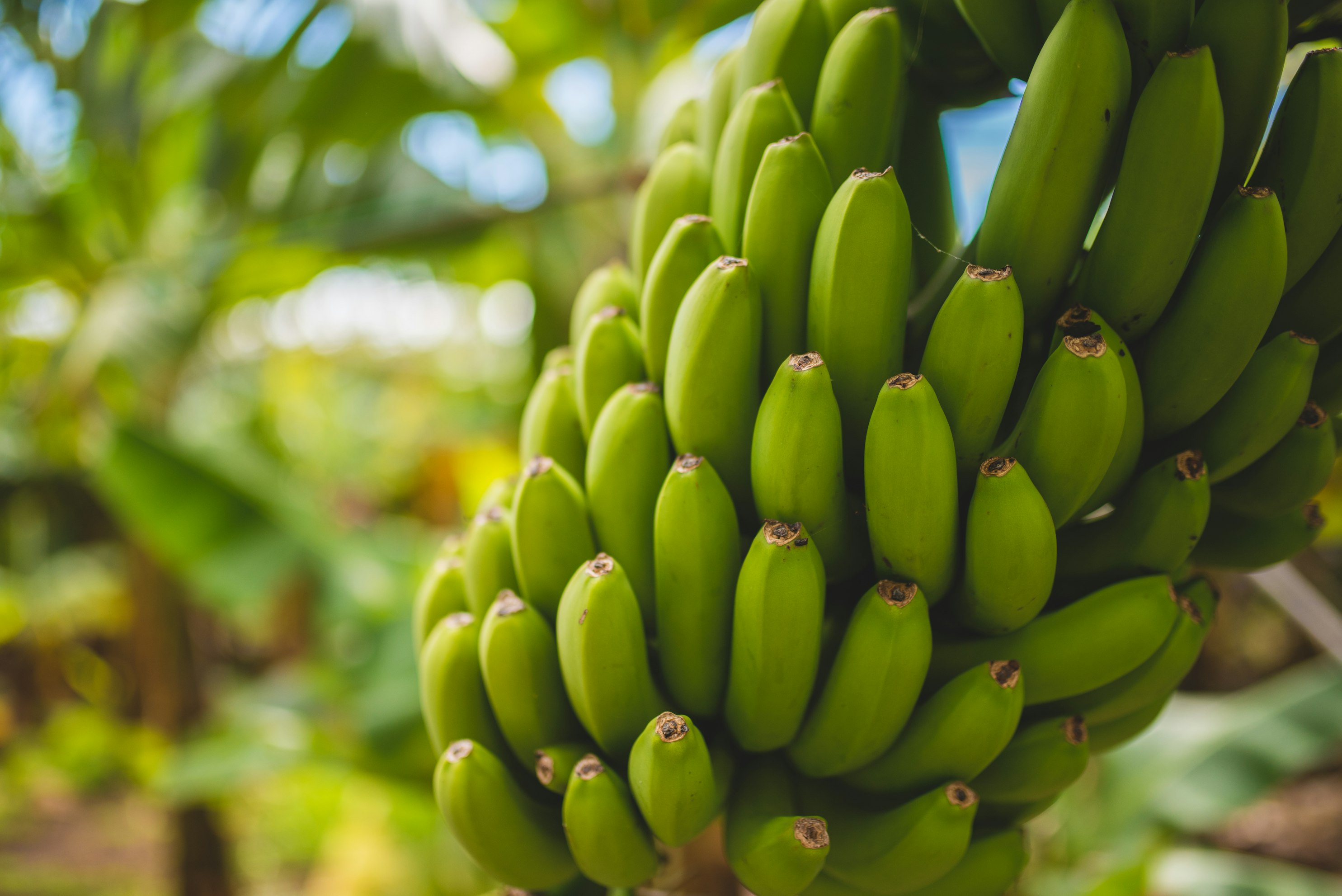Banana - Growing Guide, Uses and Health Benefits
Banana trees (scientific name: Musa) are undoubtedly both a tropical and botanical wonder. Botanically, the banana is defined as a single-seeded tropical plant that is essentially tree-like. The structure is a lush, green forehead that bears an abundance of delicious and nutritious fruit. In this guide, we delve into the world of banana trees, offering you insights, tips for growing them, and a glimpse into their cultural significance.

Banana - Botanical Facts and Properties
Sources and classification
Banana trees are scientifically classified under the genus Musa. Originally from Southeast Asia, these herbaceous plants belong to the Musaceae family. Their botanical name is derived from Antoninus Musa, the personal physician of the Roman Emperor Augustus, who was among the first to cultivate the banana fruit. The banana tree is not really a tree but a huge herb, considered the largest herbaceous plant in the world.
Anatomy and growth
Banana trees display distinctive characteristics, with trunk-like stems ("stumps") that grow to impressive heights of up to 9 meters and broad, green leaves that can reach over 2 meters in length. The trunk is made up of tightly packed leaf bases that provide the plant with the necessary support. The true stems of the banana are underground fronds, which send out new shoots, allowing the banana plant to continually renew itself.
Flowering and fruiting
Banana trees are known for their impressive inflorescences, often called “banana hearts.” These conical shapes can produce hundreds of individual flowers, most of which are sterile and only a few develop into fruit. The iconic yellow fruits appear in clusters, each containing a row of individual bananas called “bananas.” It is interesting to note that the banana plant only produces fruit once in its lifetime, the stem dying after harvesting and regrowing as another banana plant.
Banana cultivation, growing and care
When growing banana trees, it is essential to choose a suitable site with the right climate and soil. Bananas thrive in tropical and subtropical regions with consistent temperatures of 27° to 32°. They prefer well-drained soil with an acidity level (pH) between 5.5 and 7.0.
Site selection and soil preparation
Choose a sunny location with protection from strong winds. Prepare the soil by adding organic matter to improve fertility and moisture retention. Ensure good drainage to prevent overwatering, which can be harmful to banana trees.
Watering, fertilizing and mulching
Banana trees require regular watering, and a consistent supply of organic nutrients is essential for optimal growth. Fertilize regularly and provide mulch to maintain soil moisture and regulate temperature.
Pruning and pests
Pruning banana trees involves removing dead or damaged leaves and multiple shoots. It is also essential to keep an eye out for common pests such as aphids, nematodes, and mites, which can be treated with various natural remedies.
Banana cultivation, growing and care
Best practices for harvesting
Bananas should be picked when they are green and firm but have reached their full size. Harvesting can be done by cutting off the entire inflorescence with all the clusters. After harvesting, the bananas will ripen and become soft and yellow.
Culinary uses
Bananas are a well-known fruit in many cuisines, used in a variety of dishes. They can be eaten fresh, blended into smoothies, baked into bread and muffins, or fried into banana pancakes. They offer a sweet and creamy flavor, making them a staple in desserts and breakfasts around the world.
Creative non-culinary applications
Banana trees offer more than just edible fruit. The broad leaves can be used for wrapping and cooking food, while the stem has been used to make paper and textiles. In some areas, the fibrous outer layer of the inflorescence is used for various crafts.
Cultural and symbolic meaning of the banana
Banana trees occupy a prominent place in the mythology and folklore of many cultures. In Hinduism, the banana plant is believed to be the earthly representation of the goddess Lakshmi (the goddess of prosperity, wealth, and happiness). In various cultures, bananas have symbolic meanings, primarily related to prosperity, fertility, and well-being.
Banana - Health Benefits
Bananas are a nutritional powerhouse, providing essential vitamins and minerals. They are an excellent source of potassium, vitamin C, and vitamin B6. Bananas are also known to aid digestion and offer a quick source of energy.
Eating bananas can help maintain heart health, regulate blood pressure, and support kidney function. They are a convenient and natural snack option, making them an ideal choice for those looking to maintain a balanced diet.
Banana - Did you know?
Bananas are botanically a herb and are not defined as trees.
The most commonly consumed variety is the Cavendish banana, which is a variety developed to resist Panama disease (a plant disease in banana roots, caused by a toxic fungus).
Banana peels can be used as a natural remedy for mosquito bites, thanks to their anti-inflammatory properties.
Summary
We’ve explored the fascinating world of the banana plant. From their rich botanical heritage to cultivation, culinary uses and cultural significance, this guide provides you with a wealth of information to deepen your understanding of these amazing plants. So, next time you indulge in a banana, remember the rich history and diverse symbolism hidden within this humble fruit and maybe consider planting one in your garden!

_page-0001_edited.png)